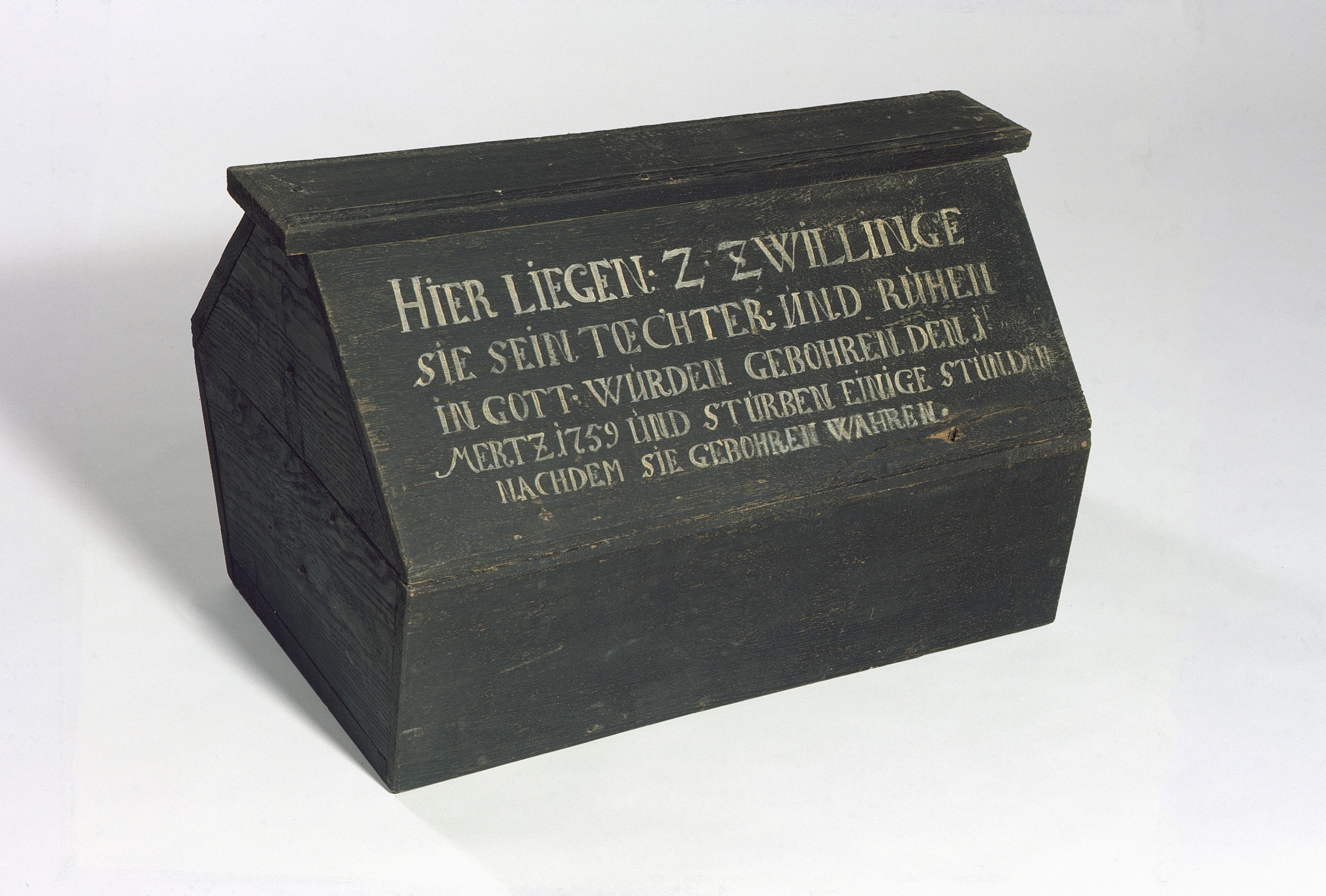Schlichter, schwarz gefaßter Holzsarg mit abgeplattetem Satteldach für die ungenannten Zwillingstöchter von Hans Ernst von Stockhausen und Anna Maria, geb. Ewald, die am 1.3.1759 geboren wurden und nach wenigen Stunden starben. Beide Dachseiten sind weiß beschriftet; Inschrift Deckelplatte: "HIER LIEGEN 2 ZWILLINGE / SIE SEIN TOECHTER: UND RUHEN / IN GOTT. WURDEN GEBOHREN DEN 1T / MAERTZ 1759 UND STÜRBEN EINIGE STUNDEN / NACHDEM SIE GEBOHREN WURDEN."; Inschrift Deckelseite rechts: "DEREN VATTER WAHR HANS / ERNST VON STOCKHAUSEN, / DIE MUTTER ANNA MARIA VON / STOCKHAUSEN: GEBOHRNE VON EWALD".
Dieser Sarg entstammt neben weiteren 26 Särgen einer Familiengrablege (Adelsgeschlecht von Stockhausen) in der evangelischen Kirche zu Trendelburg, die 1978 aufgelöst wurde.
en

